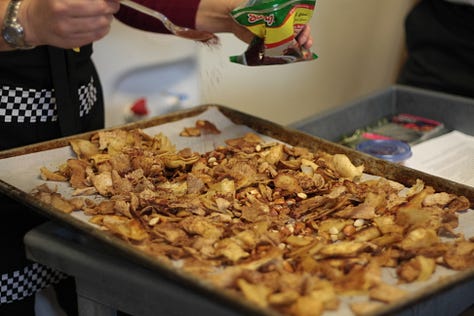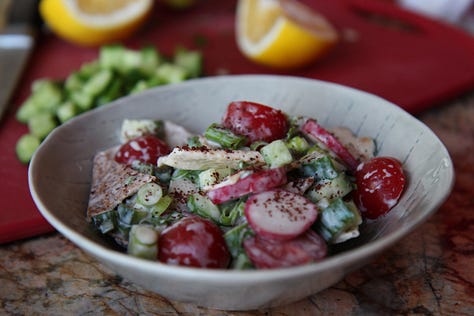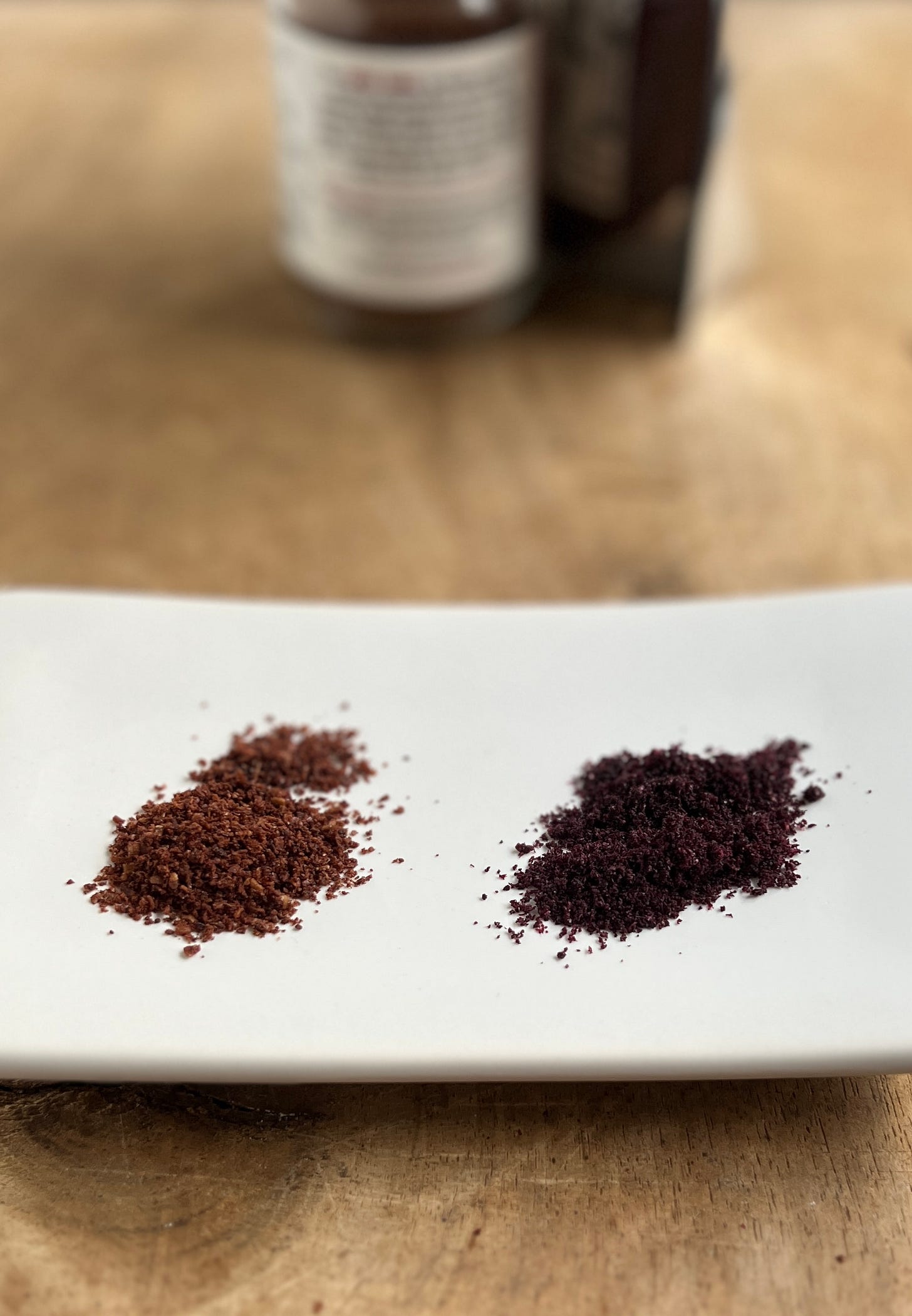Sumac & Sunshine rolls off the tongue as great alliterations do. But you may wonder why we chose this as our newsletter title and the name of our Facebook cooking community. It was more than just its melodious charm. Sumac is a dried berry that’s used in Middle Eastern cooking. It’s also one of our favorite spices. Sunshine reflects our love of California cooking. (And our favorite weather, to be honest.)
We thought it fitting that our first post for Sumac & Sunshine be on our namesake: sumac.
A couple notes before we get started: You can find the ingredients we write about in Sumac & Sunshine at Middle Eastern or well-stocked grocers, spice stores and online.
Our recipes will run the gamut from quick and easy to more involved.
Meet: Sumac
The first thing you’ll notice about sumac is its vibrant-brick-red coarse grounds. Eat a pinch to discover a tangy flavor with fruity undertones. (Think hibiscus, but with more zing.) If you’ve tasted the Middle Eastern spice blend za’atar, you’ve had sumac.
You may run across cured sumac in your shopping. Here, the berries are cut and packed with salt to cure. The resulting bright flecks have a brighter, more pronounced flavor.
Sumac’s usually used in savory dishes but can also be used in sweet ones. And in dishes that have nothing to do with Middle Eastern cookery.
If you must, substitute lemon zest, lemon juice or amchur (dried mango powder) for sumac.
Sumac is one of our go-to’s in the kitchen, where we use it…
-In place of lemon juice or vinegar for a milder result (or when we don’t want liquid!)
-Sprinkled atop hummus or labneh (a thick yogurt)
-Added to lemony vinaigrettes
-Added to marinades, especially for chicken or fish
-Used in fattoush, a Middle Eastern salad made with pita, lettuce, tomatoes, cucumbers, radishes, and herbs.



-As a sumac simple syrup for lemonade with still or sparkling water
-Sprinkled over strawberries, where it is extremely well-matched
We also like to turn it into a compound butter for slathering on baked yams, where its sweetness plays off the butter’s tang. It’s also nice with roasted carrots; add some crumbled feta and it’s a winner. A few other ideas: Toss it with pasta, rice, ravioli or roasted potatoes. Or…up to your imagination. Just don’t be shy—a healthy blob of butter is a good thing.
Sumac Compound Butter
½ cup butter, room temperature
1½ tablespoons sumac
2 teaspoons ground coriander
1½ teaspoons lemon zest
1 teaspoon red chile flakes
Add all ingredients in a small bowl and mix well. Chill it for an hour to let the flavors meld. Store leftovers in the refrigerator for up to a week, or freeze for longer storage.
Before We Leave: Sumac has medieval roots, used in Europe, Africa, and the Middle East for medicines and cooking. In North America, Native Americans have used it for healing drinks and ceremonial roles.
Enjoy!
Beth and Sarene (more about us in the welcome post)







tbh, I put it on everything (e.g., rice meats, veggies) and use a lot.
The butter looks good with the carrots.
Interesting that sumac is used by Native Americans. I always pictured it as Middle Eastern. Do you know where it originated?